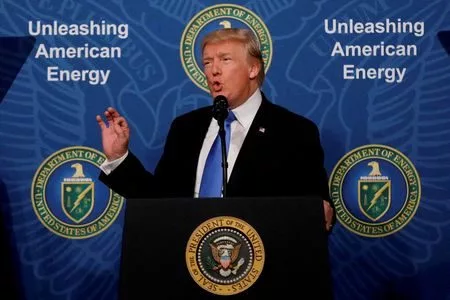By Valerie Volcovici
WASHINGTON (Reuters) – The U.S. Army Corps of Engineers on Thursday said it is revising a list of more than 600 energy and other infrastructure projects it had earmarked to be fast-tracked under President Donald Trump’s declaration of a national energy emergency.
The Army Corps, a federal engineering service with permitting authority over projects involving wetlands and waterways, posted the list of priority projects requiring faster environmental approval review last week, without public notice. That move followed an energy emergency executive order that Trump signed on January 20.
But the agency on Thursday said it will remove the list from its website database until it determines which projects meet the criteria laid out in Trump’s executive order.
The list’s removal is the latest example of the Trump administration having to backtrack on a hastily-executed action.
“The USACE is in the process of reviewing active permit applications relative to the Executive Order,” Army Corps spokesperson Doug Garman said. “The data field will be added back once we refine which permit actions may be covered by the EO.”
The list included numerous high-profile fossil fuel projects, such as Enbridge’s Line 5 oil pipeline under Lake Michigan, several natural gas power plants, and liquefied natural gas export terminals proposed by Cheniere and Venture Global.
But it also included projects that had already been cancelled or completed, and dozens of renewable energy projects, which were not included in the national energy emergency order.
Other federal agencies have also had to backtrack in recent days.
Reuters last week reported that 325 workers were sent notice they had been laid off from the National Nuclear Security Administration, which works around the world to secure dangerous nuclear materials. Later that day, an uncertain number of those layoffs were rescinded, causing chaos in NNSA offices.
Similarly, the U.S. Department of Agriculture had to rehire employees who had been working on the government’s bird flu response, after firing them a few days earlier.
(Reporting by Valerie Volcovici in Washington; Editing by Nia Williams)
Brought to you by www.srnnews.com








